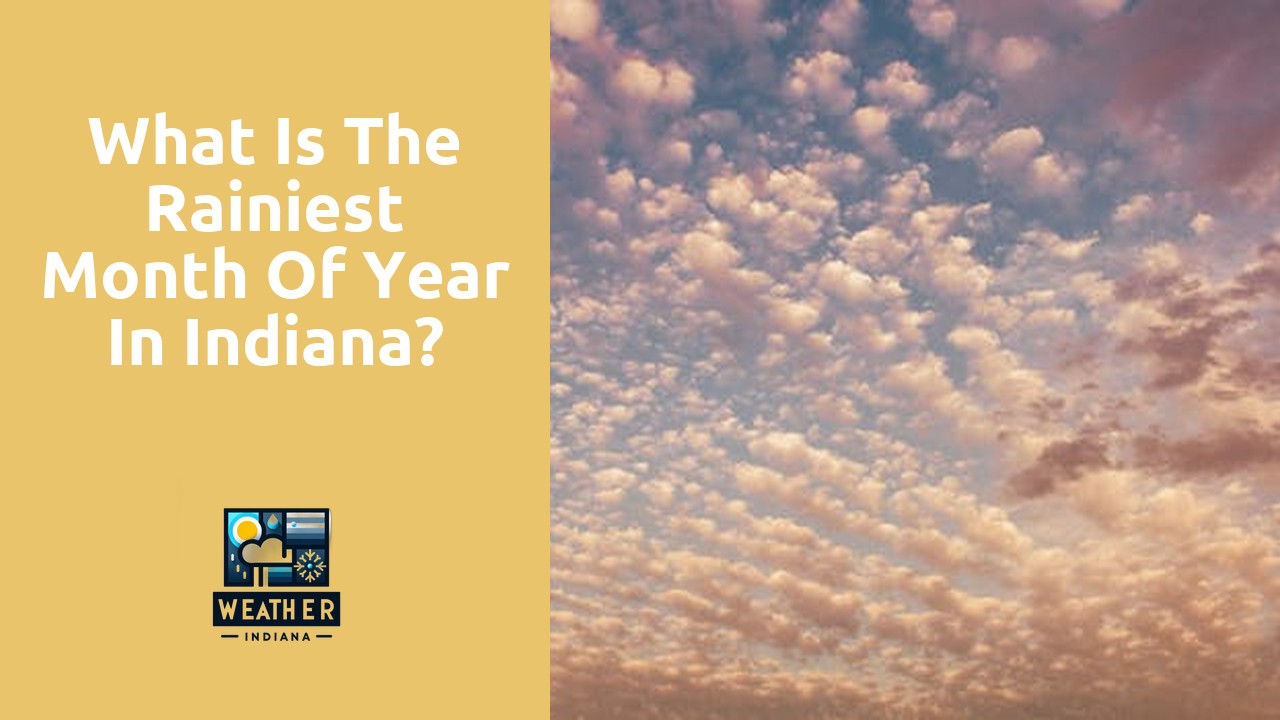Table Of Contents
Effects of Heavy Rainfall in Indiana
Heavy rainfall in Indiana can have significant effects on both the environment and the infrastructure of the state. One of the primary consequences of heavy rainfall is the increased risk of flooding, especially in low-lying areas and near rivers and streams. This can lead to property damage, road closures, and disruptions in daily life for residents.
Moreover, heavy rainfall can also impact agriculture in Indiana. Excessive water can saturate the soil, leading to waterlogging and nutrient leaching, which can affect crop yields. Erosion is another concern, as heavy rainfall can wash away valuable topsoil, jeopardizing the productivity of farmlands. Overall, the effects of heavy rainfall in Indiana underscore the importance of effective water management strategies to minimize damage and ensure the resilience of communities in the face of extreme weather events.
Flooding Risks and Mitigation Strategies
Heavy rainfall in Indiana poses a significant risk of flooding, particularly in low-lying areas and regions with poor drainage systems. The state experiences an increased likelihood of flash floods during the rainy season, which can lead to property damage, road closures, and disruptions in daily life. In urban areas, the abundance of impervious surfaces like roads and buildings exacerbates the risk of flooding as rainwater is unable to penetrate the ground, leading to rapid runoff and potential overflowing of waterways.
To mitigate the effects of flooding in Indiana, various strategies have been implemented, including the construction of retention ponds, wetland restoration projects, and the implementation of green infrastructure practices. Additionally, improved stormwater management techniques such as permeable pavements and green roofs are being increasingly utilized to reduce surface runoff and enhance groundwater recharge. Communities are also encouraged to develop comprehensive floodplain management plans to minimize the impact of floods on both infrastructure and residents, emphasizing a proactive approach to mitigating flood risks.
Comparison with Other States’ Rainy Seasons
Indiana’s rainy season stands out compared to other states in the US. While some states experience consistent rainfall throughout the year, Indiana’s peak rainy month typically occurs in the spring or early summer. This timing is crucial for farmers as it coincides with the planting season, ensuring sufficient water for crops to grow.
When comparing Indiana to states like Florida or Washington, the differences in rainfall patterns are stark. Florida, for instance, often experiences heavy rainfall during the hurricane season, while Washington sees more consistent precipitation throughout the year due to its proximity to the Pacific Ocean. Understanding these variations in rainy seasons is essential for proper water resource management and agricultural planning across different states.
Indiana’s Position in National Rainfall Rankings
Indiana’s position in national rainfall rankings places it among the states that experience a moderate amount of precipitation annually. While not classified as one of the wettest states in the country, Indiana still receives a substantial amount of rainfall throughout the year. The state’s geographic location and proximity to the Great Lakes play a significant role in determining its precipitation patterns, contributing to its position in the national rainfall rankings.
Compared to states on the East and West coasts that typically receive higher amounts of rainfall due to their proximity to large bodies of water, Indiana falls somewhere in the middle in terms of annual precipitation. Factors such as topography, prevailing wind patterns, and weather systems influence the amount of rainfall Indiana receives each year. Understanding Indiana’s position in national rainfall rankings provides valuable insight into the state’s climate and how it compares to other regions across the country.
Future Projections for Rainfall in Indiana
Future projections indicate that Indiana may experience changes in its precipitation patterns in the coming years. Climate models suggest that the state could see an increase in both the frequency and intensity of rainfall events. This shift towards heavier rainfall can have significant implications for various aspects of life in Indiana, including agriculture, infrastructure, and public safety.
With the anticipated changes in precipitation patterns, it is crucial for policymakers, urban planners, and residents to prepare for potential challenges associated with increased rainfall. Proactive measures such as improving drainage systems, updating building codes, and enhancing emergency response protocols can help mitigate the impact of heavy rainfall events in Indiana. Additionally, promoting sustainable land use practices and investing in green infrastructure can also play a key role in adapting to the forecasted changes in precipitation patterns.
Anticipated Changes in Precipitation Patterns
Climate models predict significant changes in precipitation patterns for Indiana in the coming years. The state is anticipated to experience more intense rainfall events, leading to an increase in overall precipitation levels. This shift is likely to result in a higher frequency of heavy rainstorms, posing challenges for infrastructure, agriculture, and urban areas.
Moreover, these precipitation pattern changes may also have implications for flooding risks and water resource management in Indiana. With more rainfall concentrated in shorter periods, the potential for flash flooding and soil erosion is expected to rise. As a result, it will be crucial for policymakers, urban planners, and communities to adapt to these anticipated changes and implement sustainable practices to mitigate the impacts of altered precipitation patterns on the state’s environment and economy.
FAQS
What is the rainiest month of the year in Indiana?
The rainiest month of the year in Indiana is typically May, with the highest average rainfall.
How does heavy rainfall impact Indiana?
Heavy rainfall in Indiana can lead to flooding, waterlogging, soil erosion, and disruption of transportation and infrastructure.
What are the risks associated with flooding in Indiana?
Flooding in Indiana poses risks to property damage, loss of life, displacement of residents, and contamination of water sources.
What are some strategies to mitigate flooding in Indiana?
Mitigation strategies for flooding in Indiana include proper land use planning, construction of retention ponds, improving drainage systems, and promoting green infrastructure.
How does Indiana’s rainy season compare to other states?
Indiana’s rainy season differs from other states in terms of timing, intensity, duration, and impact on various sectors like agriculture, tourism, and urban development.
Where does Indiana rank in terms of rainfall compared to other states?
Indiana’s rainfall ranking among other states fluctuates, but it generally falls within the moderate to high range due to its geographical location and weather patterns.
What are the future projections for rainfall in Indiana?
Future projections suggest that Indiana may experience changes in precipitation patterns, with a potential increase in intensity and frequency of rainfall events.
How will anticipated changes in precipitation patterns affect Indiana?
Anticipated changes in precipitation patterns could lead to both challenges and opportunities for Indiana, including impacts on agriculture, water management, ecosystem health, and urban planning.

